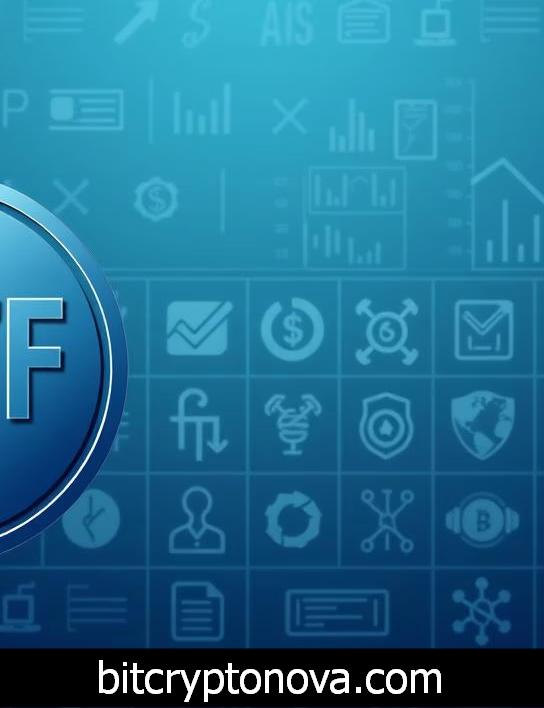Exploring cryptocurrency makes me think about security and trust. Every transaction is not about swapping digital assets. It’s about trusting in systems that keep us safe. KYC and AML rules are key in this world, protecting our money and the crypto exchange scene.

The risk of illegal activities is high in this area. So, it’s important for all us to follow these rules. By doing so, we make the world of cryptocurrency safer and more open for everyone.
Key Takeaways
- KYC and AML compliance are essential for enhancing trust in cryptocurrency transactions.
- These measures protect against illicit activities within the crypto ecosystem.
- Effective compliance frameworks are vital for the longevity of crypto exchanges.
- Users play a critical role in supporting and adhering to compliance standards.
- Understanding regulatory requirements is key to successful cryptocurrency operations.
The Importance of KYC and AML Compliance in Cryptocurrency
KYC and AML compliance are key in the world of cryptocurrency. As digital currencies grow, protecting the financial system from crime is essential. Decentralization and anonymity characterize cryptocurrencies. These features make them easy targets for fraud and money laundering. So, strict rules have been set to fight these risks.
Understanding Financial Crimes in the Crypto Space
Financial crimes in the crypto world have gone up. Criminals use exchanges to hide money or scam people. It’s crucial to teach everyone about these dangers to make the financial world safer.
Impact of Non-Compliance on Cryptocurrency Exchanges
Not following KYC and AML rules can hurt exchanges a lot. They might face big fines, legal trouble, and lose trust. Regulators have fined or criticized many exchanges for not following the rules. Strong KYC and AML steps help keep exchanges safe and the market fair.
Type of Non-Compliance
- Failure to install KYC processes results in large fines and legal actions.
- Inadequate AML measures: loss of business licenses and regulatory restrictions.
- Poor reporting and monitoring practices: increased scrutiny from regulators and a possible shutdown.
Defining KYC: Know Your Customer
The KYC process is key in the world of cryptocurrency exchanges. It aims to make sure users are who they say they are. This means checking identities through government IDs, proof of address, and sometimes biometrics.
By doing this, exchanges can learn about user habits and transactions. This makes the trading space safer for everyone.
What does the KYC process involve?
- In the KYC process, exchanges follow several steps to boost security and follow the rules:
- They check government IDs to confirm who you are.
- They ask for proof of where you live, like bills or bank statements.
- They might ask for biometric data to confirm your identity.
- They watch your first transactions to see how you behave.
- These steps help to follow rules and cut down on fraud and crime in crypto.
Risk Assessment in the KYC Process
Risk assessment is a big part of the KYC process. Exchanges have to keep an eye on risks from their users. They look for high-risk individuals and add extra safety measures.
This helps them understand their clients better and spot fraud. They keep watching to change their customer due diligence plans as needed.
The Role of AML: Anti-Money Laundering Regulations
AML rules keep our money world safe. They stop bad money activities everywhere. Banks and crypto sites follow these rules to keep things right.
As more people use crypto, we need strong AML rules more than ever.
AML Frameworks Globally
AML rules change a bit in each country. They rely on the Financial Action Task Force (FATF) recommendations as their key guide. They aim to make everyone follow the same rules to fight money crimes.
Important parts include:
- Know Your Customer (KYC) is to check who your customers are.
- Transaction monitoring to watch and check money movements.
- Reporting mechanisms for odd money moves are key to following AML rules.
Global Travel Rule Thresholds (2025)
| Jurisdiction | Threshold | Regulator |
|---|---|---|
| USA | $3,000 | FinCEN |
| EU (from 2027) | €1,000 | AMLA/EBA |
| Singapore | SG$1,500 | MAS |
How AML Regulations Affect Crypto Transactions
AML rules bring substantial changes to our approach in conducting crypto deals. If places don’t follow these rules, they face big fines or can’t work anymore. This shows how important it is to follow global rules.
Following these rules helps places keep an eye on deals better. This makes the crypto world safer and more trusted by everyone.
It’s key to understand how AML rules and the crypto world work together. This helps places stay in line and do well.
AML Framework Elements
- KYC Procedures Purpose: To verify customers’ identities. Key Benefit: Minimizes fraud risk.
- Transaction Monitoring Purpose: To analyze financial activities. Key Benefit: Identifies suspicious behavior.
- Reporting Suspicious Activity Purpose: To notify authorities of potential crimes. Key Benefit: Enhances transparency and compliance.
KYC & AML in Crypto: The Unique Challenges
Cryptocurrency faces a unique set of challenges, particularly about KYC and AML rules. The way digital currencies work means different rules in each place. This makes it hard for banks and crypto exchanges to follow the rules.
Inconsistency Across Jurisdictions
Every place has its own way of handling crypto rules. This can confuse exchanges that work in many places. Some places have strict rules, while others are very relaxed. It’s hard for exchanges to keep up with all these rules.
Exchanges need to be flexible and keep up with the latest rules. They must follow local laws and also have good KYC and AML systems.
The Anonymity Factor in Cryptocurrency Transactions
People know that cryptos are private, which is a big draw. But this privacy makes it hard to follow rules. Banks have to find a way to keep users’ info safe while still following rules.
They need to use ways to check who people are without giving up too much privacy. Finding a balance between keeping users safe and following the rules is a big challenge.
High-Risk Instruments (Red Flags)
1. Privacy Coins: Monero, Zcash (impossible tracking). 2. Mixers: Tornado Cash, Blender.io (transaction volume > $50,000). 3. P2P Trades: Exchange without KYC via LocalBitcoins. 4. Cross-Chain Swaps: Rapid conversion between networks.
Compliance Measures for Cryptocurrency Exchanges
It’s key for cryptocurrency exchanges to have good compliance measures. These steps keep transactions safe and earn customer trust. A strong plan means knowing your customers. It also involves keeping an eye on them and taking extra steps to prevent financial crimes.
Implementing Customer Identification Programs (CIPs)
Knowing who your customers are is the basis of a solid compliance plan. By checking and verifying their identities, exchanges can stop fraud. They collect personal info like names, addresses, and ID numbers. This makes security better and follows the rules.
Ongoing Monitoring and Due Diligence
It’s important to watch transactions closely to catch odd ones without delay. Exchanges need smart tech that uses AI to keep an eye on transaction patterns all the time. This helps them stay on top of compliance. Doing extra checks shows they’re serious about watching for trouble.
Compliance Measure Description: Customer Identification – Gathering and confirming identity data to curb fraud. Ongoing Monitoring – Continuous analysis of transactions to detect suspicious activities. Due Diligence – Regular assessment of risks related to customer behaviors and transactions.
Automated Tools (2025)
| Technology | Application | Examples |
|---|---|---|
| AI Screening | Real-time transaction pattern analysis | Chainalysis, Elliptic |
| Biometric KYC | Verification via face/voice scanning | Jumio, Onfido |
| OCR Verification | Automated document recognition | Sumsub |
The Financial Action Task Force (FATF) guidelines
The FATF guidelines are key for setting rules for crypto use. They help make sure crypto services follow the law. This makes it safer for everyone.
Key Recommendations for Cryptocurrency Compliance
The FATF has important rules for crypto use. They focus on knowing who you’re dealing with. This helps stop bad things from happening.
The Travel Rule and Its Importance
The travel rule is a big part of the FATF’s rules. It makes sure people know who sent and received crypto. This helps catch bad guys.

FATF Recommendation Description: Service providers are obligated to examine the risks tied to their customers.
This helps them adjust their compliance measures. KYC procedures establish robust customer identification processes to verify the identity of users. The Travel Rule says you must share sender and receiver details for transactions above a certain limit. This helps improve traceability. Ongoing Monitoring: Continuously monitor transactions and user activity to detect suspicious activities quickly.
- Collaborate with authorities to share information on suspicious activities.
- Improve regulatory compliance together.
Case Studies on Compliance Failures
The world of cryptocurrency is growing fast. But it also brings new challenges. Big exchanges have shown us what happens when they don’t follow rules. These lessons teach us why keeping up with KYC and AML rules is so important.
Examining Major Crypto Exchange Violations
Binance is a good example of what happens when rules aren’t followed. They got a huge fine of $4 billion for not doing enough to stop money laundering. This shows how serious following rules is.
Recent Incidents (2024-2025)
Bybit Hack & Money Laundering – Amount: $400 million – Scheme: Laundering via cross-chain bridges (Ethereum → Monero → Bitcoin) – Cause: Weak AML screening on P2P platforms. Lazarus Group Ransomware Attacks – Theft Volume: $1.34 billion (2024) – Tools: Tornado Cash, NFT marketplaces for cashing out.Consequences of Non-Compliance
When exchanges don’t follow rules, it’s not just about money. People start to lose trust. This can hurt a company’s reputation a lot.
Regulators might watch them even more closely. This makes it harder for them to do business. And, many exchanges that have been in trouble find it hard to come back.
Looking at these failures helps us see why following the rules is key. It keeps customers trusting and the market stable.
The Future of KYC and AML in the Crypto Industry
The world of cryptocurrency is changing fast. New tech is making KYC and AML better. This means safer and more secure digital money deals.
Trends 2025-2026
– 6AMLD (EU): Criminal liability for insufficient AML control. – MiCA Market Abuse Rules: Combating manipulation via algorithmic bots. – Unified VASP Registry: Global database of sanctioned crypto firms (under FATF auspices).
Emerging Technologies Enhancing Compliance
New tech is key to better compliance in crypto. AI helps watch transactions and check identities. It uses machine learning and blockchain analytics to spot odd activities quickly.
Compliance for Decentralized Services (DeFi/NFT)
Risks: – NFT marketplaces for laundering (fake collections). – DeFi pools with anonymous entry. FATF Recommendations (2025): – Mandatory KYC for all protocols with TVL > $100 million. – Screening smart contracts for sanctioned addresses.Trends Shaping Regulatory Standards

Regulations are getting better, moving towards global rules. This makes it easier for crypto exchanges to follow laws. Keeping up with these changes is important for staying compliant.
Technology Compliance Benefits:
- AI-driven Monitoring: Analyzes transactions in real time, improving rule adherence.
- Blockchain Analytics: Boosts fraud detection and standardizes data reporting.
- Biometric Identification: Provides secure customer verification with unified identity standards.
- Smart Contracts: Automate compliance checks, increasing transparency.
Conclusion
In conclusion, KYC and AML rules are crucial in the cryptocurrency world today. These steps are key to keeping the financial system safe and building trust among users and investors.
The path to strong crypto compliance is always moving forward. It’s crucial for exchanges to keep up with new rules. Using technology to fight bad activities helps make crypto rules easier to follow and makes the system healthier.
My dedication to KYC and AML shows my bigger goal: a safer and more reliable future for crypto. By working hard on following these rules, we can all help make the crypto market a safer place for everyone.
What are KYC and AML in the context of cryptocurrencies?
KYC means Know Your Customer, while AML stands for Anti-Money Laundering. These are important compliance steps. Financial institutions and virtual asset service providers (VASPs) use them to stop crimes. These include money laundering and financing terrorism. In the cryptocurrency market, these rules help make sure all transactions are real. They also verify customer identities, reducing the risk of illegal financial activities.
What are the KYC requirements for crypto exchanges?
Crypto exchanges must use KYC procedures to verify user identities. This often means collecting personal details like name, address, date of birth, and ID. Compliance teams at these exchanges verify identities. They do this to follow rules from the Financial Crimes Enforcement Network (FinCEN) in the U.S.
How do KYC measures help to mitigate financial crime?
KYC measures are designed to identify and verify customers to prevent financial crimes. Cryptocurrency exchanges can spot suspicious transactions by doing KYC checks. This helps them understand customer risk profiles. So, they can reduce the chances of money laundering and other crimes.
What is the crypto travel rule?
The crypto travel rule requires specific details about both the sender and receiver in crypto transactions. This rule is part of AML regulations. It aims to ensure transparency in financial transactions. By doing so, it helps authorities track where funds come from and where they go, which combats illegal activities.
How does AML and KYC affect virtual asset service providers?
AML and KYC regulations greatly affect VASPs. They must build strong compliance frameworks. These frameworks need effective AML screening and thorough onboarding. This ensures they avoid aiding criminal activities. Not complying can lead to serious penalties and loss of operating licenses.
What are the consequences of not adhering to KYC compliance?
Non-compliance with KYC rules can cause serious legal issues for crypto firms. This includes large fines, sanctions from regulators, and harm to their reputation. If exchanges don’t have proper KYC measures, they might unknowingly aid fraud, money laundering, and other crimes.
How can cryptocurrency firms implement effective AML checks?
To conduct effective AML checks, cryptocurrency firms should use a risk-based approach. This includes regular AML screening, transaction monitoring, and ongoing customer due diligence. Firms must assess customer risk profiles. They should also monitor transactions for any suspicious activities that might suggest financial crime.
What is the role of FinCEN in KYC and AML regulations?
FinCEN, the Financial Crimes Enforcement Network, plays a key role in KYC and AML rules in the U.S. It helps financial institutions, like crypto exchanges, understand compliance. It also helps fight money laundering and terrorist financing. It does this by collecting and analyzing financial data.
